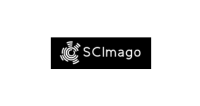EMPREGO DA COLA N-BUTIL CIANOACRILATO NA FIXAÇÃO DE RETALHO CUTÂNEO EM RATOS
DOI:
https://doi.org/10.5380/avs.v8i1.4014Palavras-chave:
n-butil cianoacrilato, cola, ratos, retalho, n-butyl cyanoacrylate, glue, rats, flap.Resumo
O propósito do presente estudo foi avaliar clínica e histopatologicamente o uso da cola de n-butil cianoacrilato em procedimentos de retalho de avanço, uma vez que a mesma é freqüentemente utilizada em feridas pequenas com baixa tensão de pele. Foram utilizados 18 ratos, linhagem Wistar, divididos em dois grupos de nove. Após produzir-se uma ferida cutânea retangular de 2,0 x 1,5 cm, incluindo o músculo tronco cutâneo, na região torácica dorso-lateral esquerda, a mesma foi restaurada por meio de retalho cutâneo de pedículo único. No grupo I, o retalho foi fixado aplicando-se cola de n-butil cianoacrilato aplicada apenas na superfície interna das bordas e no grupo II realizaram-se pontos isolados com fio de náilon 4-0. Para avaliação histológica, três animais de cada grupo foram submetidos à eutanásia aos 07, 15 e 30 dias de pós-operatório.O tempo cirúrgico foi menor no grupo I, sendo a cola de fácil aplicação. Em ambos grupos observaram-se complicações, como inflamação e deiscência, porém sem diferenças estatísticas. O padrão cicatricial foi semelhante nos dois grupos. Foi possível concluir que a cola de n-butil cianoacrilato comportouse de forma semelhante à sutura, na síntese de retalhos cutâneos de pedículo único em ratos.
Use of n-butyl cyanoacrylate glue with single pedicle advancement flap in rats
Abstract
The aim of this study was to evaluate clinically and histopathologically the use of nbutyl cyanoacrylate glue in advancement flap procedures, because this glue is usually used in small wounds with low skin tension. Eighteen Wistar rats with weight between 300 and 400 g were used and divided in two groups of nine each. A 2.0 x 1.5 cm rectangular skin wound, including the cutaneous trunci muscle, was performed in the left dorsal lateral thoracic side and repaired using the single pedicle advancement flap technique. In the first group, the flap was fixed with the glue on the internal surface of the edges. In the second group, the flap was fixed with simple interrupted suture using nylon 4-0. The surgical time was lower in group I, and glue application was easy. In both groups were observed complications, such as inflammation and wound dehiscence, but there was no statistical difference. Three animals from each group were euthanatized at seven, 15 and 30 days postoperative to realize the histological examination. It was possible to conclude that, macroscopically and microscopically, n-butyl cyanoacrylate glue was similar to suture in fixation of single pedicle advancement flap in rats.
Downloads
Como Citar
Edição
Seção
Licença
Autores que publicam nesta revista concordam com os seguintes termos:
- Autores mantém os direitos autorais e concedem à revista o direito de primeira publicação, com o trabalho simultaneamente licenciado sob a Creative Commons - Atribuição 4.0 Internacional que permite o compartilhamento do trabalho com reconhecimento da autoria e publicação inicial nesta revista.
- Autores têm autorização para assumir contratos adicionais separadamente, para distribuição não-exclusiva da versão do trabalho publicada nesta revista (ex.: publicar em repositório institucional ou como capítulo de livro), com reconhecimento de autoria e publicação inicial nesta revista.
- Autores têm permissão e são estimulados a publicar e distribuir seu trabalho online (ex.: em repositórios institucionais ou na sua página pessoal) a qualquer ponto antes ou durante o processo editorial, já que isso pode gerar alterações produtivas, bem como aumentar o impacto e a citação do trabalho publicado.













